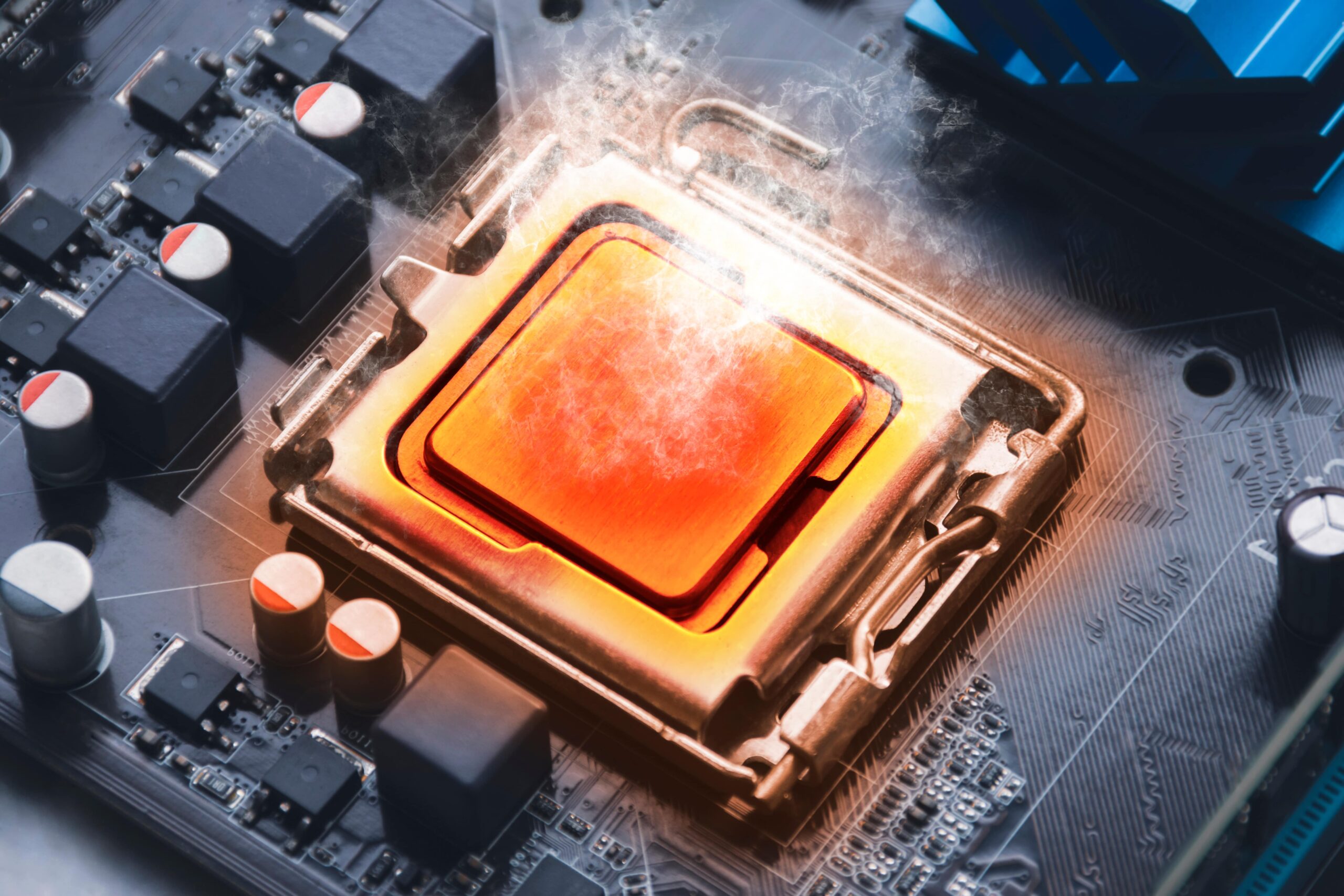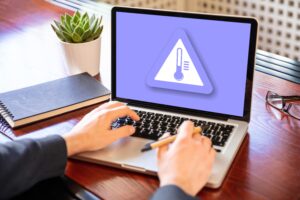With support solutions for the home and office, My Computer Works is here to help you get back to your life.
Don’t Sweat It: Managing Computer Overheating Issues

A high computer temperature is normal for the most part, but not always. This is why overheating is a more common problem than you think, especially when you use your computer for work, video editing, or gaming programs. Unfortunately, if left unattended, it can be problematic, so you need to take measures to manage it.
The team at My Computer Works has put together this helpful guide to help you with your computer overheating issues. We’ve discussed the signs of an overheating computer and how to manage it to ensure it continues to operate as it should.
What Does Humidity and Heat Do to Your PC
All computers need proper cooling to function and prevent overheating. Hot or humid environments will damage your device, which will likely cause overheating. This can lead to a PC’s shortened lifespan and performance issues since hardware parts can become damaged and internal processes slowed.
Signs of Computer Overheating
A clear sign of overheating is that the computer is hot when you touch it. Other common signs may include loud whirring sounds or the sound of your fan running in overdrive. Your computer may also randomly shut down or end certain applications to prevent damage and cool down.
How To Manage Computer Overheating Issues
Before managing your overheating problem, you must take a precautionary step to protect yourself against data loss and hardware damage.
So, back up your data before working on your computer to address the overheating issue. The last thing you want is to lose files because you didn’t save them elsewhere while trying to address overheating concerns.
After you have done this, there are ways you can manage computer overheating issues, which we have discussed below:
Cleaning Dust and Debris
It’s natural for dust to collect within your PC’s ventilation ducts. However, if left for too long, the dust will eventually reduce airflow and clog vital components meant to prevent overheating, like your computer’s fans.
We recommend you clean your device at least once every six months. Often, an overheating issue can be solved simply by cleaning the device.
Remove any dust or dirt and test your computer to see if it overheats again after cleaning it. If it doesn’t, the problem is solved; if it still overheats, you might need to try troubleshooting other issues and solutions.
Using Cooling Pads or Stands
Laptops are not immune from overheating woes. Although cooling pads or stands may initially seem clunky and awkward, they can be essential for laptops experiencing overheating problems. Most laptops are designed with ventilation systems at the bottom, so if your device needs extra help cooling down, a cooling pad can help.
Adjusting Power Settings
Most users avoid playing with the built-in settings or think to keep the power setting the same. Yet, if you adjust your settings to include power saving mode and auto screen brightness adjustments, your device may take a little less strain than before, reducing any overheating that may be occurring.
However, it’s natural to be concerned about fiddling with the settings too much, so speaking with a professional technician might help, as they can tell you what to adjust.
Checking for Software or Hardware Issues
If your hardware or software is outdated, it could also cause your overheating problem. Regular updates ensure that your computer receives the latest performance and security enhancements, making the computer run better. So check that your software is updated and your hardware isn’t malfunctioning.
Checking Your Fans
While it is normal to occasionally hear your computer fan speed up, a consistently loud fan may indicate that the fans are not running properly. Usually, this is due to damage or a blockage.
To ensure your fans are still working properly, place a hand close to the computer vents and wait to feel the air moving through it. There could be an issue if the air is barely brushing your hand.
An alternative method to check your fan is to take a flashlight and look through the vents to see if there is any movement or obstructions with dirt. If the fans seem to be not working, it might be time to replace them.
Re-Applying Thermal Paste
Another reason your computer could be overheating is because it needs a new thermal paste. Most users forget about the thermal paste in their devices.
As the name implies, thermal paste improves the thermal conductivity between two device components: the CPU and heatsink. However, over time, the paste can lose effectiveness and need to be reapplied. Applying thermal paste is a great CPU overheating fix if you’re experiencing a high CPU temperature issue.
When you want to apply the new thermal paste, it’s important to remove the old paste with the thermal paste removal kit and then reapply the newer paste. You don’t need a lot of paste. The standard is usually a third of a dot or a pinky nail amount.
The Wrap-Up On Managing Computer Overheating Problems
If you follow regular maintenance and clean your computer, you are less likely to experience overheating issues. However, we understand that not everyone has the time. So, if you’re experiencing an overheating computer or want to avoid this, you can contact us at My Computer Works. We can help you maintain your computer and address the issue causing it to overheat if that happens to be the case.
Watch this video for even more tips on keeping your PC cool:


